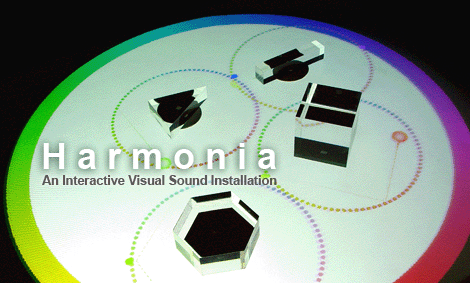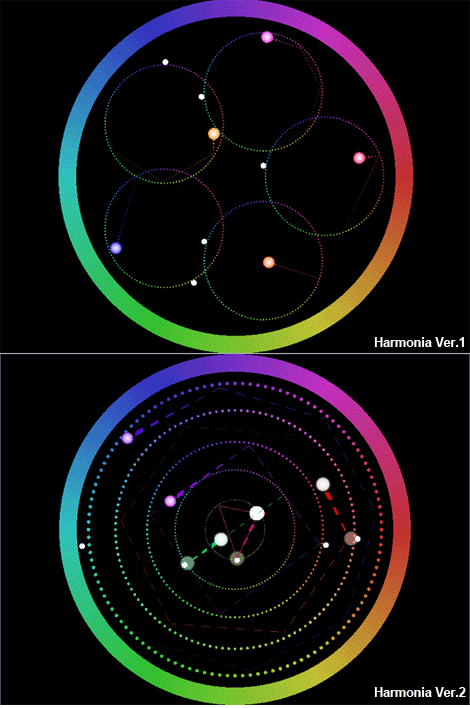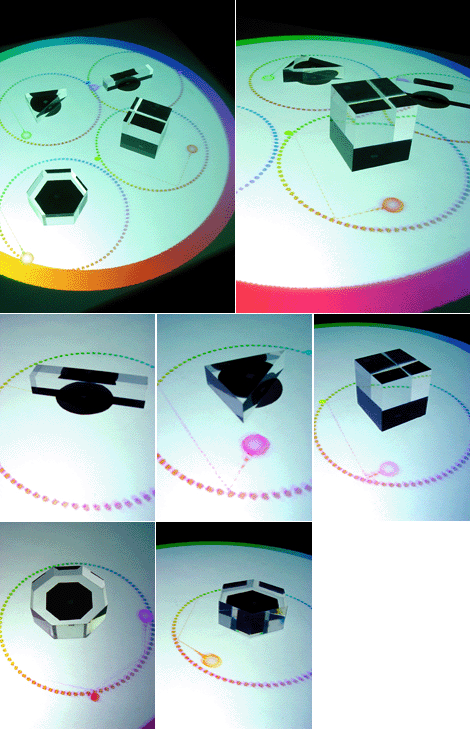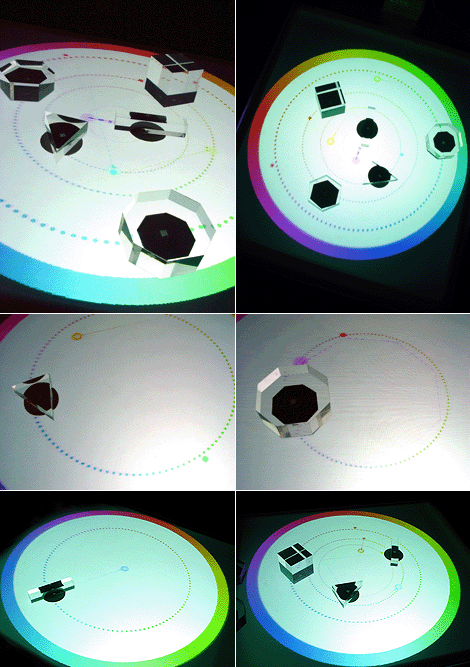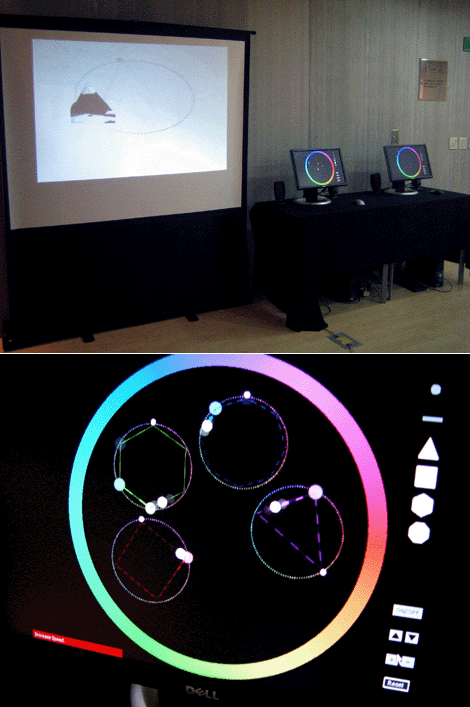Works
Color note 2 (2008)
Symphony(2007)
Color note(2007)
Interactive Hats(2007)
Sound Marbles(2006)
3 Metronomes(2006)
OSS(2006)
Lines(2006)
Picircle(2005)
Jums(2005)
5 Stories of Lights(2005)
Marbling(2005)
Nabi(2005)
Aigho(2004)
Harmonia (2008)
Processing, Reactivision
Harmonia _ An Interactive Visual Sound Installation
Currently, the boundary between music and the visual arts is collapsing, with many attempts to combine these two fields. Some basic elements shared by both connect music and visual arts. Basic music elements such as note, rhythm, and pitch can be compared to basic visual elements such as dot, line, and side, which can be used to express the feeling of music by using form, color, and texture.
In this study, I focused on expressing music visually by using basic shapes of mathematical properties, and I tried to make an experimental interface that organizes musical sound, chord and rhythm in a mathematical system. This project is a new way to express musical sound visually.Also, it creates curiosity, especially among people who do not have specialized musical training, since using this method does not require extensive instruction, as learning to play traditional musical instruments does, but instead offers a simple and easy way to play music by using basic shapes.
Harmonia came from Pythagorean principle of Harmonia believed that each element was structured by a different harmonia: earth is a cube, fire a pyramid, water an icosahedron, air a triangle. The world was not dominated by forces, but rather arranged in an orderly and structured (mathematical) way. Basically everything has a mathematical form.That principle can certainly be applied to my sound visualization's fundamental concept.
There are two versions of Harmonia :
Version one and two are similar each other in terms of objects' own way of creating their sounds and harmony. The only difference between version one and two is a center of the whole circle that can be represented in velocity of creating sounds.
Each object in version one has its own center in circle and this means it does not produce any change of speed. However, every objects in version two have one unchangible center in one big circle and velocity can be changed depending on their objects' existances on x, y axis.
Harmonia Ver. 1 : Each object's movement and way of performing sound and visual images
Harmonia Ver. 2 : Each object's movement and way of performing sound and visual images
Harmonia Ver. 1 : Movie
Harmonia Ver. 2 : Movie
MFA Degree Show
Date : JUN.12~JAN.26, 2007
Open : 9am~6pm
Opening Reception : JUN.12, 1pm
Hosted by Samwon S&D hall, SNU
Harmonia (2008) _A Thesis Project for MFA Degree Show
by Yoon Chung HanSupporter : Prof. Suzung Kim
Programming Collaborator : Byeong-jun Han (My brother)
